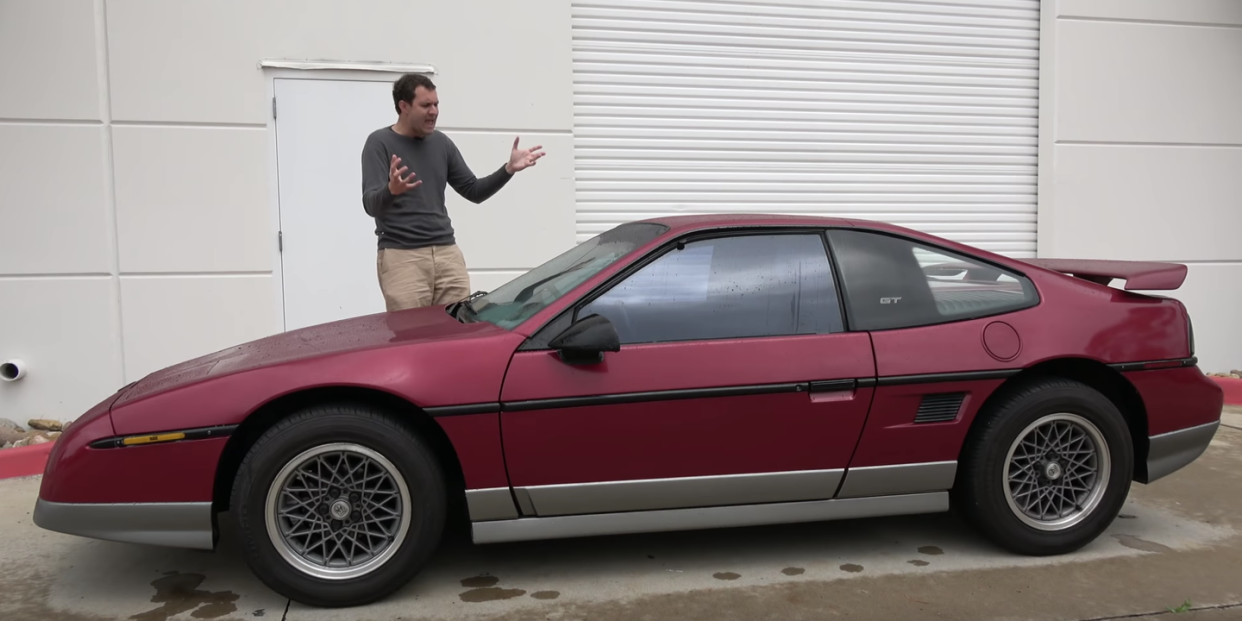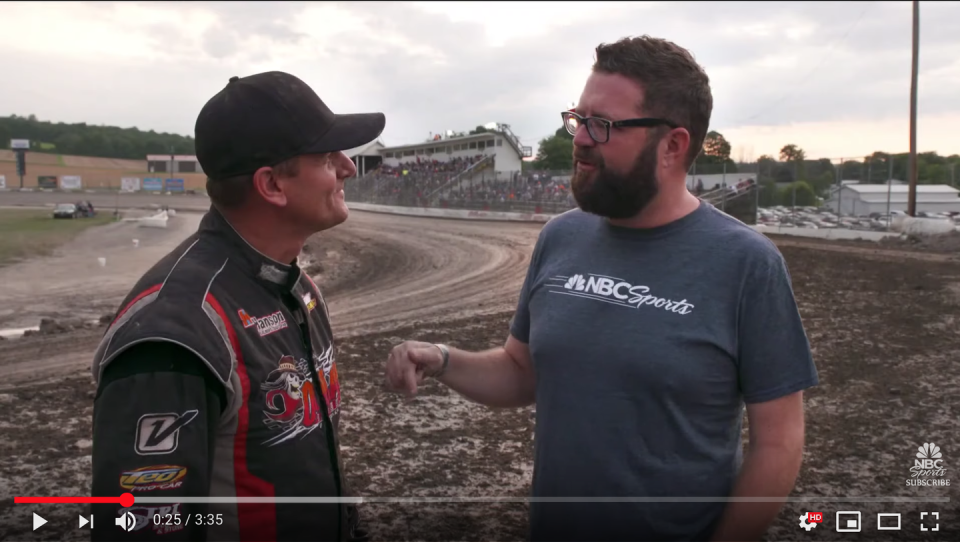Car Star Power Is Different in the 21st Century: Think YouTube

"I promise that if you Googled 'new Ford Explorer' right now, you'd find 10 driving video reviews of the new Ford Explorer," says Doug DeMuro. "But how many could show you the way the USB cords go through the lid of the center console?"
DeMuro, 31, is the King Car Nerd of YouTube. His primary channel on the video distribution service has 3,063,639 subscribers as this is written, and virtually all of his 20-to-40-minute videos have at least one million views. His most popular ones have more than four million hits. He wouldn't tell me how much money he's making off YouTube, but it's all he does for a living, and he recently purchased a 2005 Ford GT. Those aren't cheap.
Here's one of DeMuro's hard-core deep dives into a vehicle's trivial details. There's something admirable about anyone featuring the Fiero.
We're at a weird inflection point for all sorts of media, and automotive media can't avoid the maelstrom. Institutions that have defined how car crushes are shared and discussed don't have the conversational heft they once did. Meanwhile, individuals like DeMuro and "Tavarish" and "Hoovie" and manic mechanic Scotty Kilmer have grown their YouTube audiences to the point where they can make their living off the video service. Blogs and websites (like this one) have as much to do with sharing car cravings as monthly magazines. And, meanwhile, monthly magazines (like, you know, C/D) are still around with the editorial assets to perform tests and scout out features that blogs and YouTubers can't. It's a battle royal for audience and attention. And it always helps to be a celebrity.

Automotive celebrities can be broken down into three categories. At the top are those legacy stars who bring pre-existing fame to the world of cars. People like Jay Leno and Jerry Seinfeld and even Ralph Lauren have been around longer than the Internet and have been famous for decades. Jay Leno's Garage and Seinfeld's Comedians in Cars Getting Coffee aren't strictly about cars, but they leverage the long-standing celebrity-industrial complex to attract even non-enthusiasts to their presentations. Their productions are slick, professional, and commercial. They probably don't generate the bucks of sitcom syndication or late-night hosting, but they're likely sending some cash to their makers.
As successful as these guys are, the world isn't making Jay Lenos or Jerry Seinfelds anymore. Their fame was made decades ago, and those decades can't be rolled back. Once their generation is gone, so is their kind.
A tier behind that are automotive content creators who don't have that outside fame but have the support of cable networks or other traditional media. That's people like Richard Rawlings, whose Gas Monkey Garage in Dallas has been turned into Discovery Channel's Fast 'N Loud, which is 88 percent goofy antics, 10 percent suspicious deadlines, and 2 percent car content. Get into some of the less-viewed cable channels, and the quality dropoff is spectacular. I've sat through some of those shows (professional research) where they're literally watching paint dry.
I'm not sure how durable any celebrity who emerges from a cable show can be. When was the last time anyone heard from the guys on American Chopper?
Rutledge Wood, 39, who answered a Craigslist ad for a marketing job with the Speed Channel in 2005 and has since become an on-screen presence on the American edition of Top Gear, a commentator on NBC's NASCAR coverage, and one of the hosts of Netflix's new Hyperdrive, is the one guy who seems to have captured the corporate goofball imagination. Wood is at his best when he's down at the grassroots.
Wood has all those big institutions behind him, but he'll still answer my phone call.
"I split my time, right now, between NBC and Netflix," explains Wood. "For me, I'm always, 'Wow, it would be cool to do a podcast,' but I'm so busy doing work for the people who are my main employers that it's hard to find time to think, 'Maybe I should do another thing out there.' For me, it's trying to balance having three daughters and wanting to be home and stuff."
Wood has jobs, and his car love runs deep, but there are never going to be a lot of opportunities like those he has had. They'll probably become even rarer as cable systems atomize under pressure from cord cutters and even Netflix is challenged by new streaming services.
And Wood has a definite place on the celebrity pecking ladder. He's still flying commercial, but he's also getting recognized in airports. And so is Doug DeMuro, who is at the top of the third tier. Because they're personalities, and right now, personalities matter.
"Maybe I'm wrong," says DeMuro, "but I think the YouTube viewer is skeptical of businesses." Younger people make up most of the YouTube audience, and they've grown up suspicious of established brands and their often unstated agendas. If DeMuro's videos were slicker and sleeker productions, it would be easy to suspect he was pushing something insincerely. Wood's advantage in his world is the ability to be authentic even when he has the backing of a TV network or the largest streamer. If every one of us today is a brand, DeMuro and Wood are among the best at building theirs.

Going forward, sharing automotive enthusiasm and car love will mean packaging it around personalities. When Car and Driver was in its youth and adolescence, it did a great job of that, making Brock Yates, David E. Davis, Jr., and a dozen others worth seeking out—maybe not household names in most households, but definitely known quantities among the car-brained. (Check the bylines on that "Best-Handling American Car" story from 1984, the same one linked above as a Fiero reference). It's tough today to break out just on the strength of one's writing, even if some of the best stuff ever to appear in C/D is in print and online right now.
It used to be that institutions gave credibility to individuals. CBS News made Walter Cronkite famous, but if you can name the host of the CBS Evening News today, you're in a small minority (hint: she has been the latest weeknight anchor only since mid-July). Instead, the personalities come first; institutional and corporate legitimacy are built up from that.
"Celebrity" is a word that's almost filthy in how it has come to influence our culture. But it's inescapable today, even as the number of celebrities has exploded and the reach of any one of them is now limited. The car world will likely never again see the likes of Andy Granatelli, Mario Andretti, Richard Petty, Lee Iacocca, or Ayrton Senna. They were bigger-than-life celebrities.
Today, our celebrities are life size.
You Might Also Like

